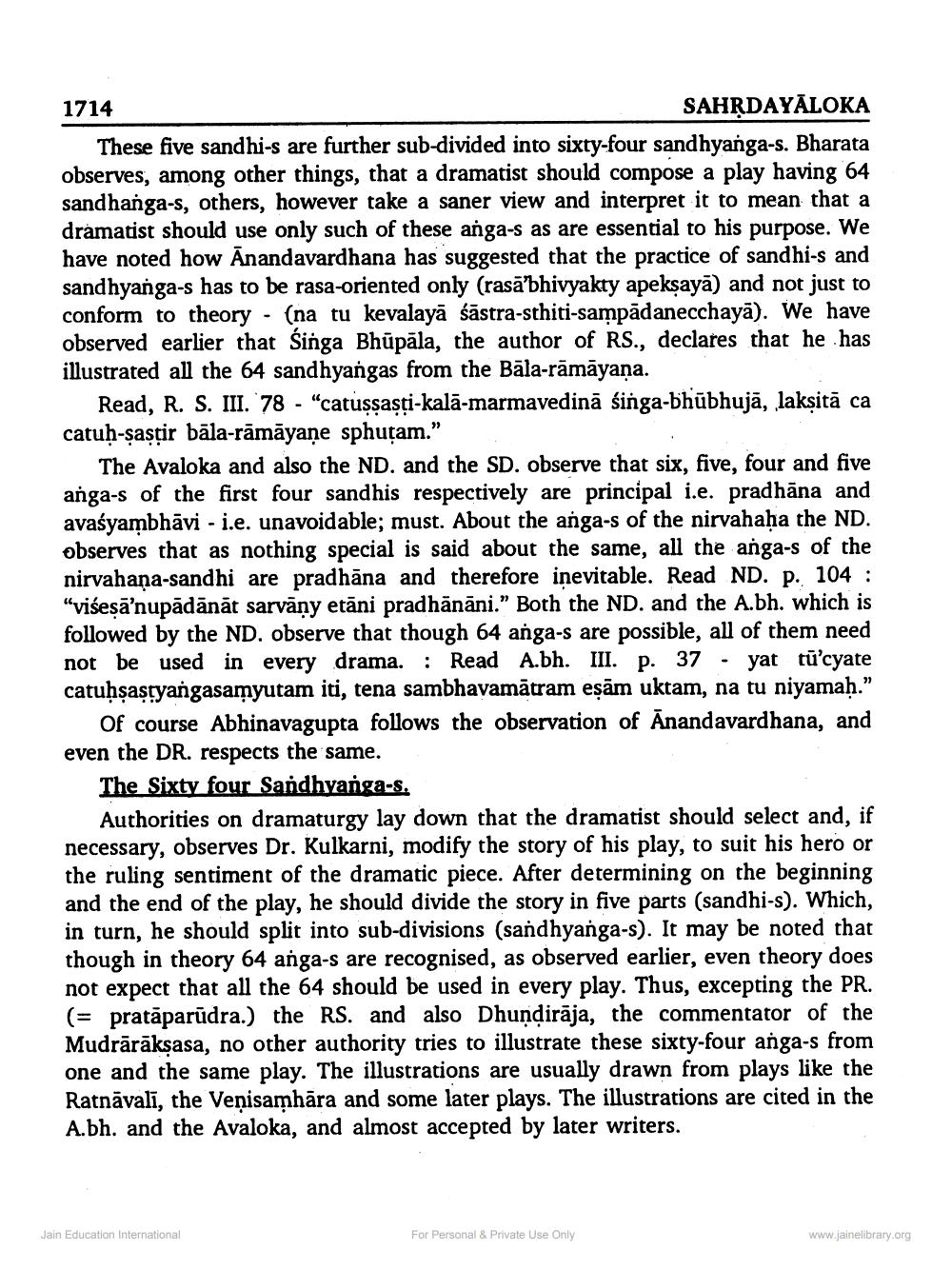________________
1714
SAHRDAYĀLOKA These five sandhi-s are further sub-divided into sixty-four sandhyanga-s. Bharata observes, among other things, that a dramatist should compose a play having 64 sandhanga-s, others, however take a saner view and interpret it to mean that a dramatist should use only such of these anga-s as are essential to his purpose. We have noted how Ānandavardhana has suggested that the practice of sandhi-s and sandhyanga-s has to be rasa-oriented only (rasā'bhivyakty apeksayā) and not just to conform to theory - (na tu kevalayā śāstra-sthiti-sampādanecchayā). We have observed earlier that Śinga Bhūpāla, the author of Rs., declares that he has illustrated all the 64 sandhyangas from the Bāla-rāmāyana.
Read, R. S. III. 78 - "catussasti-kalā-marmavedinā śinga-bhūbhujā, lakṣitā ca catuh-sastir bāla-rāmāyaṇe sphutam."
The Avaloka and also the ND. and the SD. observe that six, five, four and five anga-s of the first four sandhis respectively are principal i.e. pradhāna and avaśyambhāvi - i.e. unavoidable; must. About the anga-s of the nirvahaha the ND. observes that as nothing special is said about the same, all the anga-s of the nirvahana-sandhi are pradhāna and therefore inevitable. Read ND. p. 104 : "višesā’nupādānāt sarvāny etāni pradhānāni.” Both the ND. and the A.bh. which is followed by the ND. observe that though 64 anga-s are possible, all of them need not be used in every drama. : Read A.bh. III. p. 37 - yat tū'cyate catuhsastyangasamyutam iti, tena sambhavamātram eşām uktam, na tu niyamah.”
Of course Abhinavagupta follows the observation of Anandavardhana, and even the DR. respects the same.
The Sixty four Sandhyanga-s.
Authorities on dramaturgy lay down that the dramatist should select and, if necessary, observes Dr. Kulkarni, modify the story of his play, to suit his hero or the ruling sentiment of the dramatic piece. After determining on the beginning and the end of the play, he should divide the story in five parts (sandhi-s). Which, in turn, he should split into sub-divisions (sandhyanga-s). It may be noted that though in theory 64 anga-s are recognised, as observed earlier, even theory does not expect that all the 64 should be used in every play. Thus, excepting the PR. (= pratāparūdra.) the RS. and also Dhundirāja, the commentator of the Mudrāraksasa, no other authority tries to illustrate these sixty-four anga-s from one and the same play. The illustrations are usually drawn from plays like the Ratnāvalī, the Venisamhāra and some later plays. The illustrations are cited in the A.bh. and the Avaloka, and almost accepted by later writers.
Jain Education International
For Personal & Private Use Only
www.jainelibrary.org




